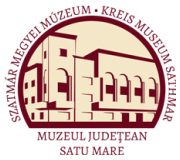Szőcs Péter Levente (szerk.): Ciumeşti. Ghid cultural şi istoric (Satu Mare, 2010)
Archaeological Discoveries
explained by the intensification of the mechanized agriculture: the previously un-worked areas were ploughed, while the older ploughs were deepened. The collection of Gyula Kovács reached the museums of Baia Mare, Satu Mare and Carei in three stages, where they have been preserved until today. Following the discovery of the famous Celtic helmet with bird (10th of August, 1961), intense archaeological research was conducted on the territory of Ciumeşti from 1962 to 1965. The excavations carried out in the sites Moară-Ferma CAP (Mill- Agricultural Cooperation) and Bostănărie (Melon Field) aimed to reveal the necropolis where the helmet was discovered and the settlement connected to it, identified in the nearby. In addition to the Celtic finds, a great number of artifacts was discovered in the area researched, dating from other periods, too. The stone tools found in Ciumeşti-Păşune (Pasture) site, were considered as dating before 10.000 BC, this being the oldest evidence of human habitation in the area of Carei. More numerous traces of the early Neolithic human communities (Criş Culture) were identified in this region, the most important being found at the sites Berea- Stavila Mică and Movila Libuc (Libuc Hill). Farming and husbandry were the main occupations of these communities. The habitation in the area increased considerably Topor neolitic de la Berea-Cetatea Iepurelui Neolitikus kőbalta Bere-Nyúlvár lelőhelyről Neolithic stone ax discovered at Berea-Cetatea Iepurelui Topor-ciocan eneolitic de piatră de la Ciumeşti-Bostănărie Rézkori kő kalapács-balta Csomaköz-Tökös lelőhelyről Eneolithic stone ax-hammer discovered at Ciumeşti-Bostănărie
